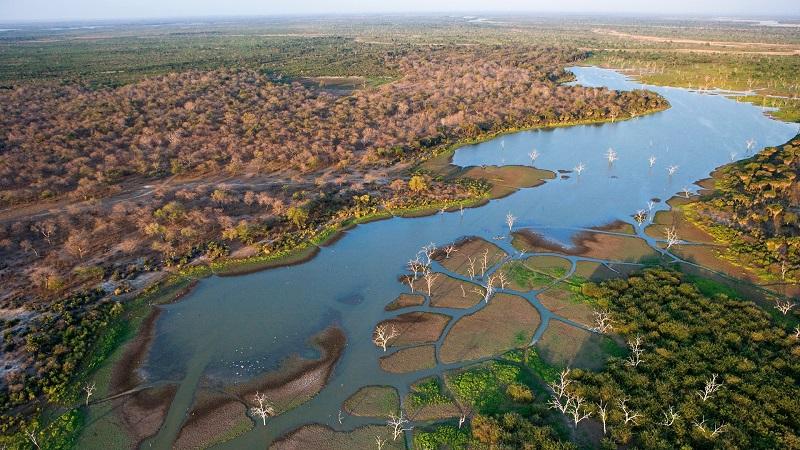The Okavango Delta, located in northern Botswana, is one of the world’s largest inland deltas and a UNESCO World Heritage site. This unique ecosystem, where the Okavango River fans out into the Kalahari Desert, creates a lush and vibrant oasis teeming with wildlife. The Okavango Delta in northern Botswana is one of the planet’s most beautiful wilderness areas.
The Okavango Delta is situated in the Kalahari Basin and fed by the Okavango River, the fourth longest river in Southern Africa. Its aquatic landscape goes through dramatic periods of flood and drought; yet an astonishing variety of animals have adapted to the changes making this one of the best safari destinations in Africa.
Overview of Okavango Delta
The Okavango Delta covers an area of about 15,000 square kilometers during the peak flood season, creating a dynamic and ever-changing landscape. The delta’s intricate network of channels, lagoons, and islands supports an incredible diversity of plant and animal life. Visitors to the Okavango Delta can explore this pristine wilderness through a variety of safari experiences, making it a premier destination for nature lovers and adventure seekers.
Wildlife
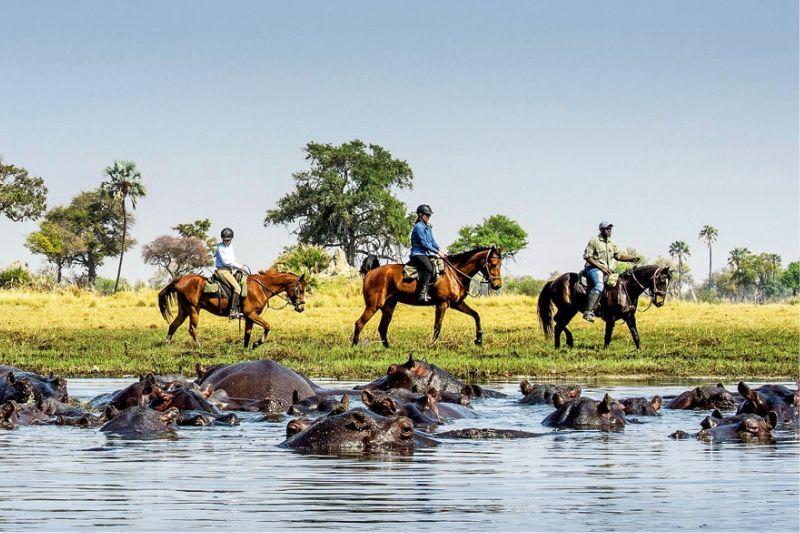
The Okavango Delta is a wildlife haven, hosting an incredible array of animal species, with around 160 different mammals calling it home. Among these, visitors can spot the Big Five, and the delta is particularly noted for its frequent leopard sightings. Additionally, it is one of the best places to observe the endangered African wild dog in its natural habitat.
Other notable inhabitants include cheetahs, hippos, crocodiles, zebras, and giraffes, while antelope species such as the red lechwe, sable, and the vulnerable topi are also commonly seen. The Okavango Delta is a birdwatcher’s paradise, with over 450 bird species recorded. Some notable species include the African fish eagle asily recognizable by its distinctive call and striking appearance.
Malachite Kingfisher is a small, colorful bird frequently spotted along the delta’s waterways. Other species like the Pel’s Fishing Owl rare and sought-after species among birdwatchers, typically found in dense riverine forests. The delta’s diverse habitats also support a variety of reptiles and amphibians like the Nile crocodiles commonly seen basking on riverbanks or lurking in the water.
How to Get to the Okavango Delta
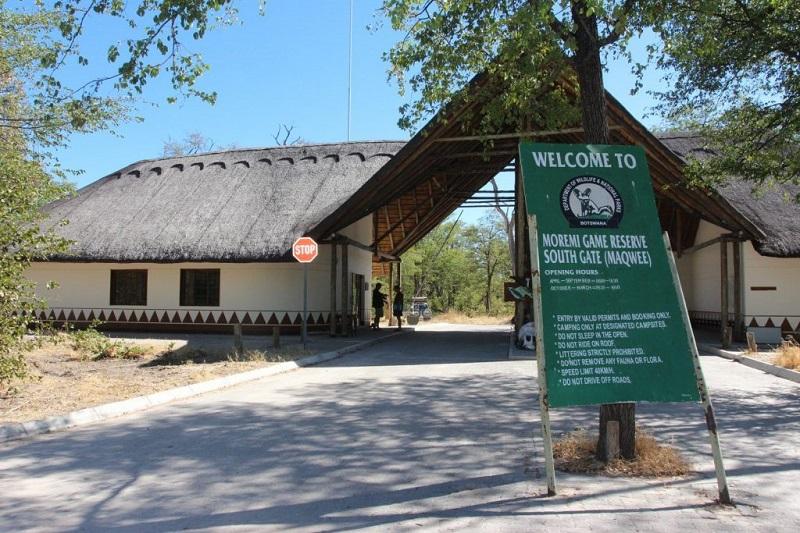
The most convenient way to reach the Okavango Delta is by flying on a charter plane from Maun Airport (MUB). Upon arrival, you’ll be transferred to your lodge or camp via boat, mokoro, or 4×4 from the nearest airstrip. Air Botswana offers scheduled flights to Maun from Gaborone, Botswana’s capital, and Johannesburg, South Africa.
The flight from Maun to the delta typically takes around 20 to 45 minutes, offering stunning aerial views of the delta’s waterways and wildlife. While less common, it is possible to reach certain parts of the delta by a combination of road and boat travel. This option can be more adventurous and provides a closer connection to the landscape. The journey involves driving from Maun to a designated drop-off point and then taking a boat to your accommodation in the delta.
Alternatively, you can access the eastern part of Moremi Game Reserve by road. Drivers from Chobe National Park use the North Gate, while the South Gate, 90 kilometers from Maun, serves those coming directly from Maun. Road conditions vary seasonally, necessitating a 4×4 vehicle.
The Best Time to Visit Okavango Delta
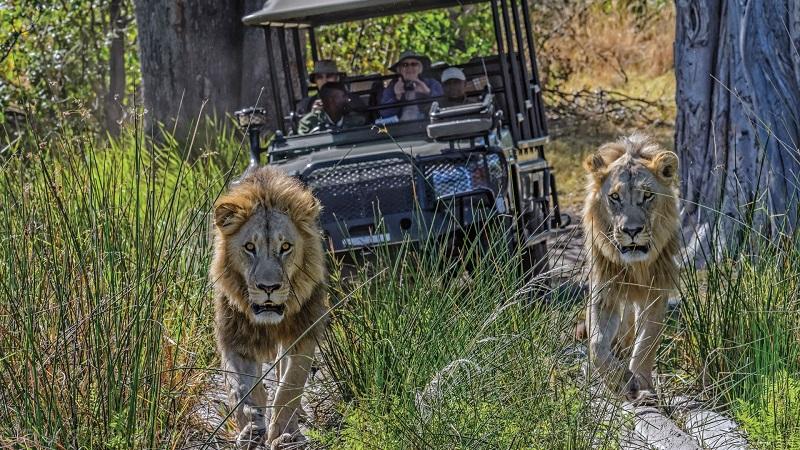
The Okavango Delta offers unique experiences throughout the year, with each season providing different highlights. The dry season, from May to October, is the best time for game viewing. During these months, water levels in the delta are high due to floods from Angola, attracting a plethora of wildlife to the concentrated water sources.
The dry season also offers favorable conditions for mokoro (dugout canoe) excursions and boat safaris. The wet season, from November to April, brings lush, green landscapes and the arrival of migratory birds. This period is excellent for birdwatching, as many species are breeding and nesting. Although wildlife is more dispersed due to the availability of water throughout the delta, the wet season offers a quieter and more intimate safari experience with fewer tourists.
Other Activities in Okavango Delta
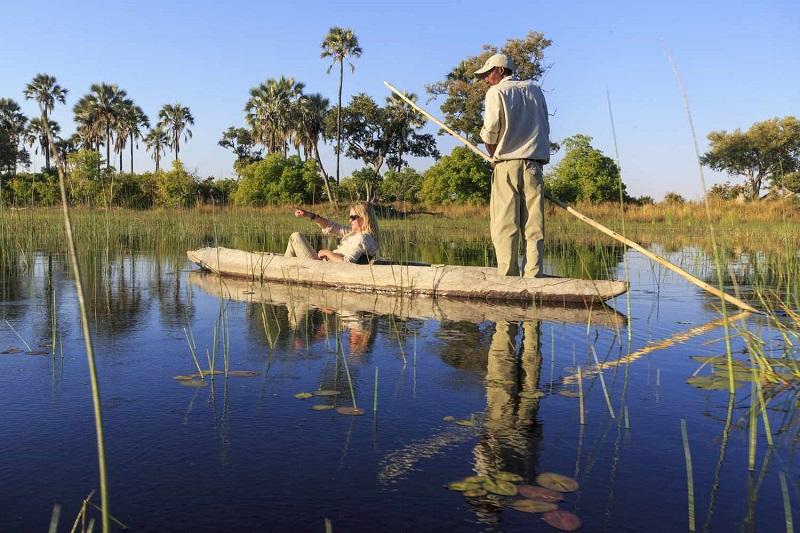
One of the most iconic experiences in the Okavango Delta is a mokoro excursion. These traditional dugout canoes, poled by experienced guides, allow visitors to glide silently through the delta’s waterways, offering a unique perspective on the ecosystem. Mokoro trips provide excellent opportunities to observe aquatic life, birds, and the intricate details of the delta’s flora.
For those who want to explore the delta on foot, guided walking safaris are a thrilling option. Accompanied by knowledgeable guides, visitors can learn about the smaller details of the ecosystem, such as plants, insects, and animal tracks. Walking safaris offer an intimate and immersive experience, allowing a deeper connection with the natural environment.
Boat safaris are another popular way to explore the Okavango Delta. Motorboats can access deeper and more extensive waterways, providing opportunities to see larger concentrations of wildlife. These safaris often include sunset cruises, where visitors can enjoy spectacular views and the tranquil ambiance of the delta.
Park Fees for Okavango Delta
Visiting the Okavango Delta usually involves staying at private concessions or lodges, which include park fees in their overall package rates. However, if visiting the Moremi Game Reserve within the delta, additional fees apply:
- Park Entrance Fee for Moremi Game Reserve: USD 30 per adult per day for foreign visitors.
- Vehicle Fee: USD 10 per vehicle per day for foreign visitors.
These fees contribute to the conservation and maintenance of the delta’s pristine environment. It’s advisable to check with your lodge or tour operator for the most current rates and any additional charges.
FAQs: Touring Okavango Delta
Do I Need a Car to Tour the Delta?
No, a car is not necessary to tour the Okavango Delta. Most visitors explore the delta through organized tours, which include transportation such as mokoros, motorboats, and small aircraft transfers. These methods allow access to the delta’s remote areas and provide an authentic safari experience.
Are Unguided Walks Allowed in the Delta?
No, unguided walks are not allowed in the Okavango Delta for safety reasons. The delta is home to dangerous wildlife, including predators and large herbivores. All walking safaris must be conducted with experienced guides who are trained to ensure visitor safety and provide valuable insights into the ecosystem.
How Much is a Game Drive in the Delta?
The cost of a game drive in the Okavango Delta varies depending on the type of accommodation, the duration of the drive, and whether it is a shared or private experience. On average:
- Shared Game Drives: These typically cost between USD 50 to USD 150 per person for a half-day game drive.
- Private Game Drives: These can range from USD 300 to USD 600 per vehicle for a half-day game drive, depending on the level of luxury and exclusivity.
Many lodges and camps offer game drives as part of their all-inclusive packages, which can provide better value.
Conclusion
The Okavango Delta offers an unparalleled safari experience with its dynamic landscapes and abundant wildlife. Whether exploring by mokoro, on foot, or engaging in cultural activities, visitors are guaranteed unforgettable encounters and lasting memories.
